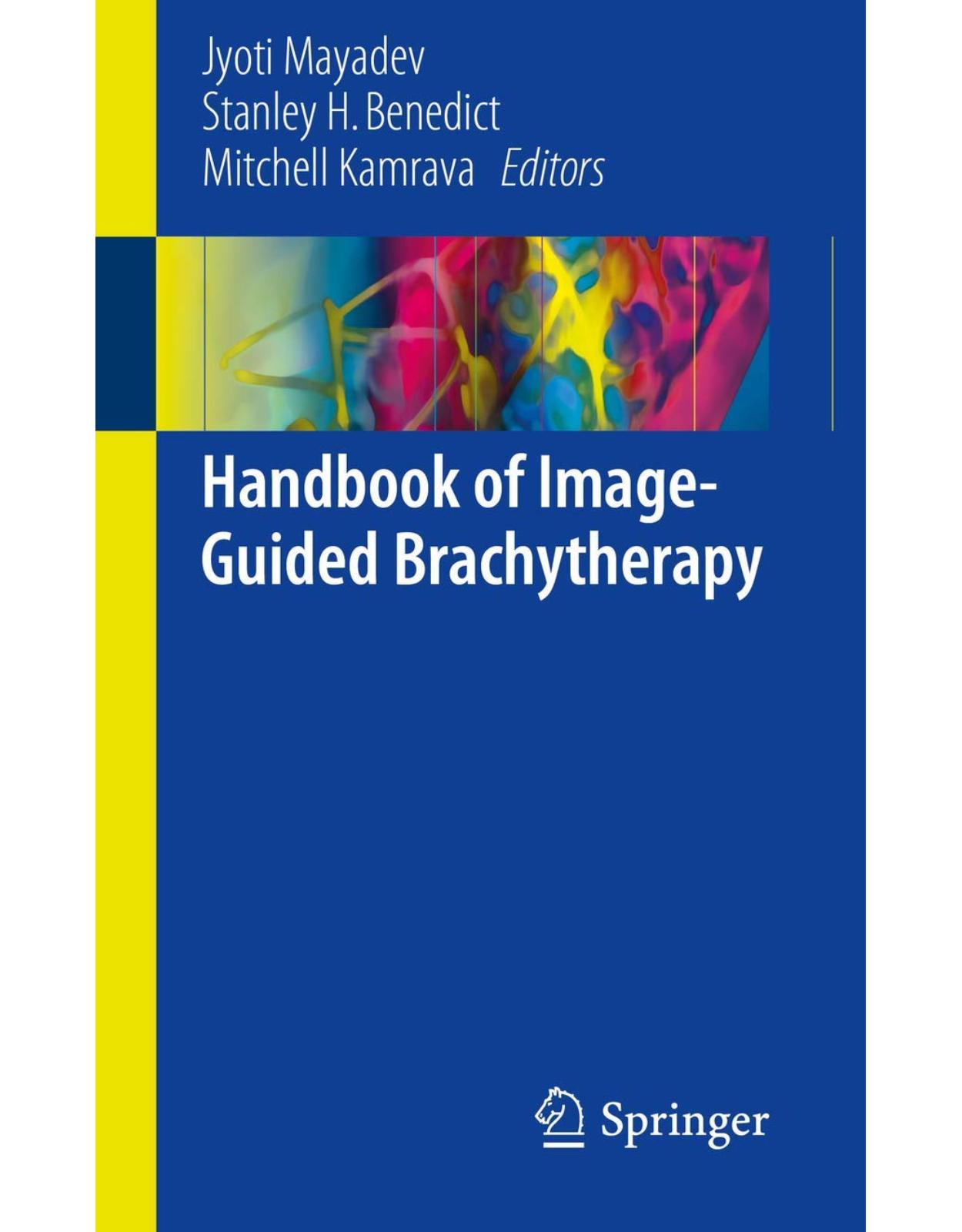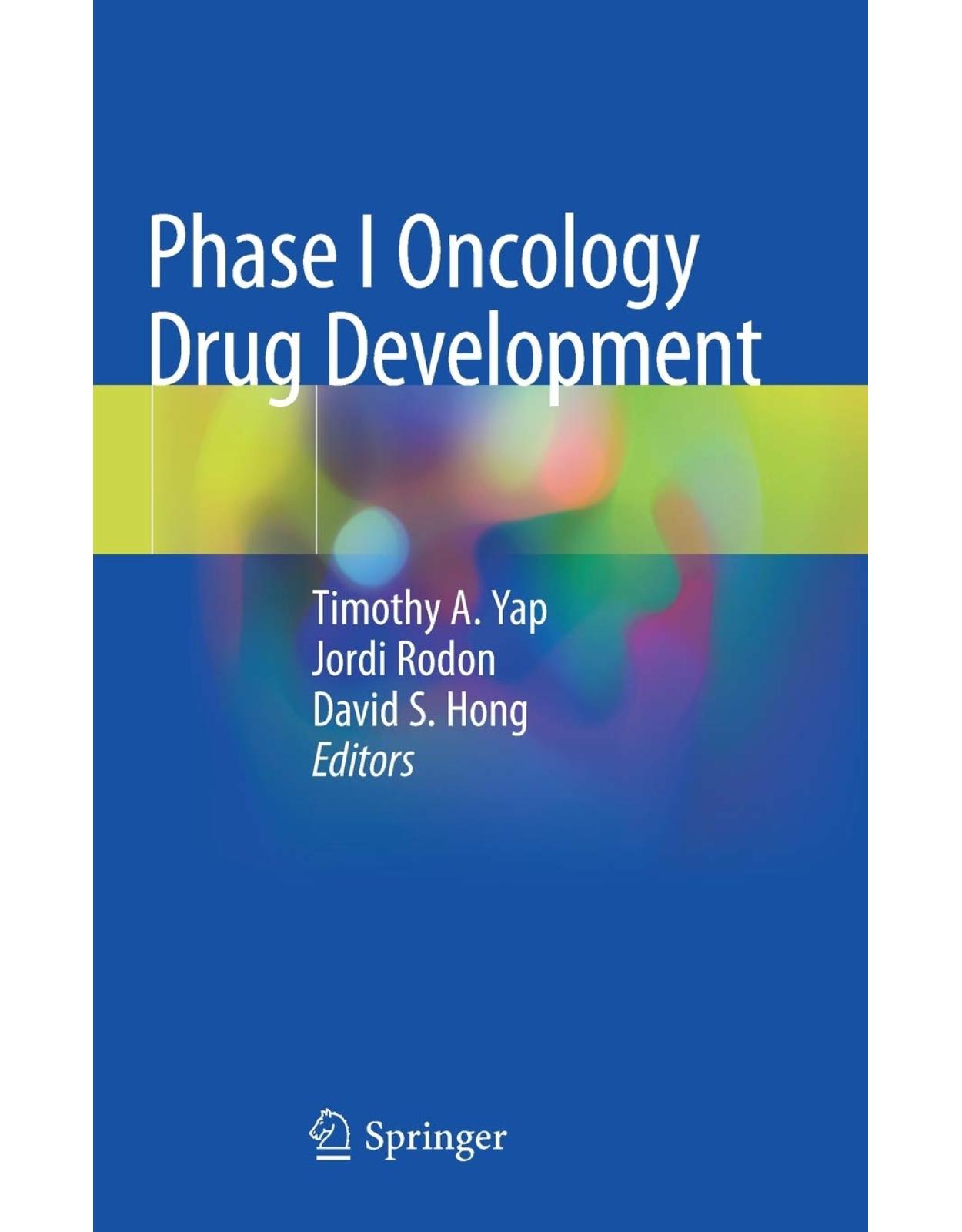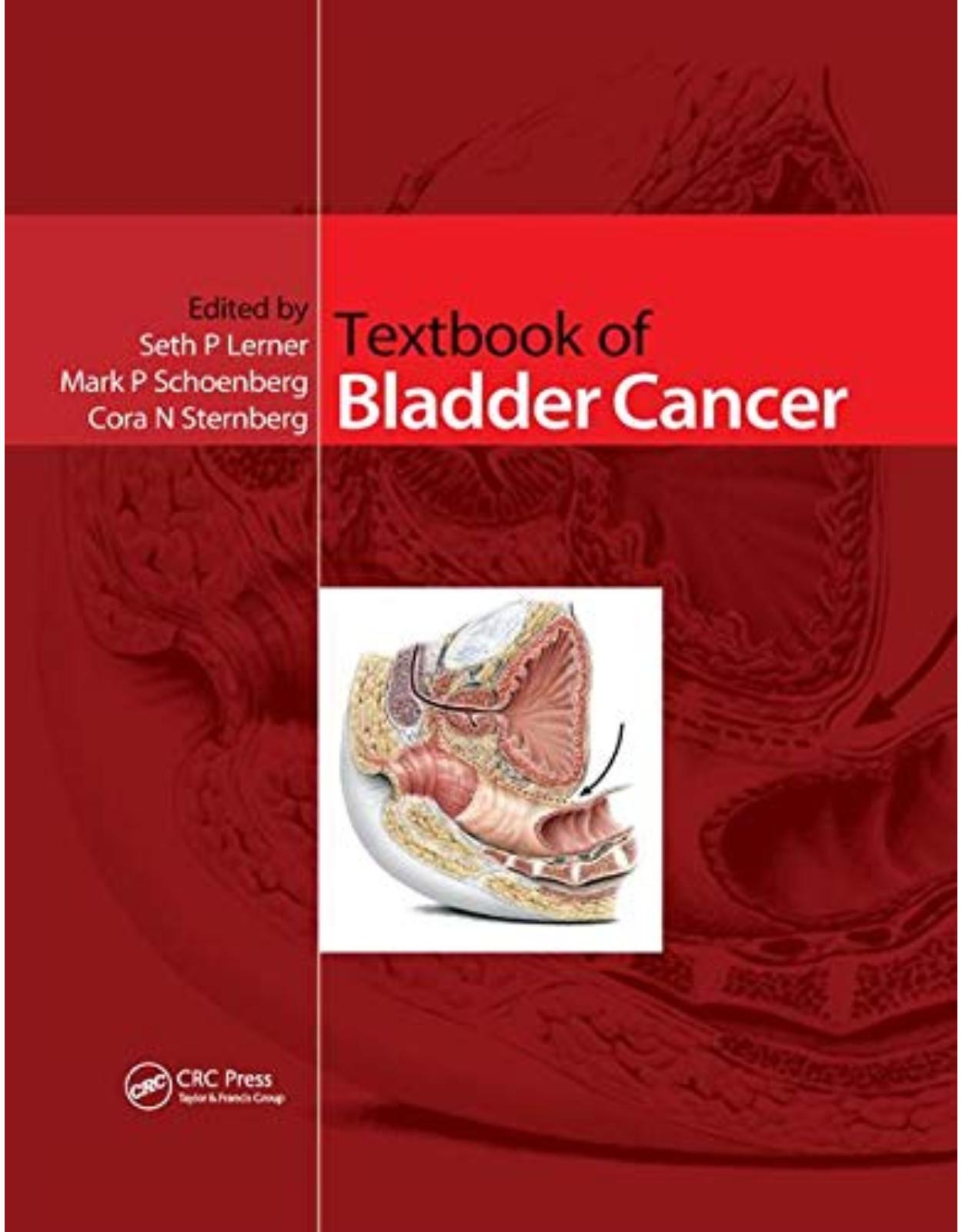
Handbook of Image-Guided Brachytherapy
Livrare gratis la comenzi peste 500 RON. Pentru celelalte comenzi livrarea este 20 RON.
Disponibilitate: La comanda in aproximativ 4 saptamani
Editura: Springer
Limba: Engleza
Nr. pagini: 622
Coperta: Paperback
Dimensiuni: 20.35 x 3.63 x 13.31 cm
An aparitie: 30 Mar. 2017
Description:
This handbook provides a clinically relevant, succinct, and comprehensive overview of image-guided brachytherapy. Throughout the last decade, the utility of image guidance in brachytherapy has increased to enhance procedural development, treatment planning, and radiation delivery in an effort to optimize safety and clinical outcomes. Organized into two parts, the book discusses physics and radiobiology principles of brachytherapy as well as clinical applications of image-guided brachytherapy for various disease sites (central nervous system, eye, head and neck, breast, lung, gastrointestinal, genitourinary, gynecologic, sarcoma, and skin). It also describes the incorporation of imaging techniques such as CT, MRI, and ultrasound into brachytherapy procedures and planning. Featuring procedural and anesthesia care, extensive images, contouring examples, treatment planning techniques, and dosimetry for the comprehensive treatment for each disease site, Handbook of Image-Guided Brachytherapy is a valuable resource for practicing radiation oncologists, physicists, dosimetrists, residents, and medical students.
Table of Contents:
Part I: Radiobiology and Physics of Image-Guided Brachytherapy
Chapter 1: Radiobiology of Brachytherapy
Basic Radiobiological Principles
DNA Damage
Cell Death
DNA Damage Tracking
Linear Quadratic Equation
Dose–Response Curves
Survival Curve Analysis: The α/β Ratio
The Differences Between External Beam Radiation Therapy and Brachytherapy
Brachytherapy Applications
Dose Rates
Radiobiological Effect of Different Dose Rates
The 4(+1) “R’s” of Radiobiology: Repair, Reoxygenation, Redistribution, Repopulation (and Ra
Repair
Reoxygenation
Redistribution
Repopulation
Radiosensitivity
How Are 4R(5)s Affected by the Interval Between Fractions?
Timing with EBRT
Modeling the Dose Response
Effect of Varying the Dose Size
BED Equations
EQD2 Equations
Radiobiological Effects of Large Single Doses
References
Chapter 2: General Physics Principles in Brachytherapy
Classifications of Brachytherapy
Types of Brachytherapy Implants
Types of Implant Duration
Types of Source Loading
Types of Dose Rate
Radioactive Sources
Characteristics of Radioactive Source
Ideal Radioisotopes for Brachytherapy
Source Forms
Brachytherapy Radioisotopes
Treatment Planning
Dosimetric Systems
Manchester System or Paterson–Parker System for Interstitial Implants
Quimby System or Memorial System for Interstitial Implants
Paris System for Interstitial Implants
Stockholm System for Intracavitary Implants
Manchester System for Intracavitary Implants
Paris System for Intracavitary Implants
Problems with Older Dosimetric Systems
Dose Optimization
Dose Calculation
Fundamental Problems with Old Dose Calculation Protocols
AAPM TG-43 Protocol
Model-Based Dose Calculation (MBDCA, AAPM TG-186 Protocol)
Grid-Based Boltzmann Equation Solvers (GBBS)
Monte Carlo Simulations (MC)
Collapsed-Cone Superposition/Convolution Method (CCC)
References
Chapter 3: Treatment Delivery Technology for Brachytherapy
Introduction
General Physics and Technology
Permanent Implant Brachytherapy
General Facts
Workflow
Common Radionuclides
Afterloader-Based Brachytherapy
General Facts
Workflow
New Applicators/Concepts
Sources for High Dose Rate Brachytherapy and Pulsed Dose Rate Brachytherapy
Yttrium-90 Microsphere Brachytherapy
Clinical Uses
Physical Properties of 90-Y
Radiation Therapy Planning
Available Products
References
Chapter 4: Image Guidance Systems for Brachytherapy
Introduction
2D
Planar Radiography
Fluoroscopy
Ultrasound
3D
Computed Tomography (CT)
Ultrasound
MRI
PET
Challenges in the 2D to 3D Transition (Going from Points to 3D Geometry to Functional Structu
Other Imaging Methods Specific to Brachytherapy
Tools for Multi-Modality Imaging
References
Chapter 5: Quality Assurance in Brachytherapy
Introduction
Brachytherapy QA
References from AAPM Task Groups
Periodic QA
Brachytherapy Workflow
Brachytherapy Audit
Implementation
Development of QA Program
Development of Audit Program
References
Part II: Clinical Applications of Image-�Guided Brachytherapy
Chapter 6: Anesthesia and Procedural Care for Brachytherapy
Key Concepts
Rationale for Anesthesia Care During Brachytherapy
Anesthetic Options for Brachytherapy
Examples of Anesthesia in Brachytherapy
Pre-procedural Brachytherapy Optimization
Standards/Guidelines for Monitoring Patient During Anesthesia
Post-anesthesia Patient Monitoring
Anesthesia Instructions for Patients
Sample Bowel Prep Regimen
Pre-procedural Workflow
Monitored Anesthesia Care (MAC)
Local Anesthesia
Local Anesthesia for Interstitial Breast Brachytherapy
Example: Lidocaine for Interstitial Breast Brachytherapy (APBI)
Example: SAVI Insertion
Example: Cervical Intracavitary or Interstitial Insertion to Use a Cervical Local Anesthesia Bloc
Conscious Sedation
General Anesthesia
Neuraxial Anesthetic—Spinal
Common Side Effects and Complications of Spinal Anesthesia
Neuraxial Anesthetics—Epidural
Post-procedural Care
Conclusion
References
Chapter 7: Breast Brachytherapy and Clinical Appendix
Introduction
Rationale for Brachytherapy
Goal of Brachytherapy
Timing
Pertinent Anatomy for Brachytherapy
Pathology
Typical Pathology
Foundation of Rationale for Brachytherapy
Local Recurrence
Disease Free Survival
Selection Criteria
Selecting Candidates for Implantation
Choice of Brachytherapy Applicator
When to Implant
Clinical Guidelines to Judge Readiness for Implantation
Medical Operability: Anesthesia Consent, Guidelines for CBC, Anticoagulation
Image Guidance Utilization
Guidelines for Implantation
Pre-procedure Advice
Procedure Tips
Verification of Brachytherapy with Visual and Imaging
Evaluation of Implantation
Distribution of Implant
Review Imaging Real Time or When a Change Is Needed
Treatment Planning Considerations [2]
Optimal Brachytherapy Doses
Optimization of Target Volume: Point Based, Volume Based [28]
Optimal Dose Distribution with Isodose Curves
Toxicity (Table 7.3)
Toxicity Side Effect Review: Common, Rare
Management of Brachytherapy Toxicity
Appendix A
Breast Case Study 7.1
Breast Case Study 7.2: Breast Brachytherapy with SAVI
Breast Case Study 7.3: Breast Brachytherapy with Interstitial
References
Chapter 8: Eye Plaque Brachytherapy
Introduction
Rationale for Brachytherapy
Goals of Brachytherapy
Pertinent Anatomy for Brachytherapy
Pathology
Rationale for Brachytherapy
Selection Criteria
Selection for Implantation
When to Implant
Clinical Guidelines to Judge Readiness for Implantation
Medical Operability, Anesthesia Consent, Guidelines for Anticoagulation
Image Guidance Utilization
Use of Image Guidance Preprocedure
Commonly Used Image Guidance
Use of Image Guidance During Procedure
Guidelines for Implantation
Preprocedure Advice, Procedural Positioning, Exam Assessment
Procedure Tips
Verification of Brachytherapy
Evaluation of Implantation
Treatment Planning
Optimal Brachytherapy Dose
Use of Image Guidance for Target Volume Delineation
Optimization of Target Volume
Seed Loading and Optimal Dose Distribution
Toxicity
Anterior Segment Complications
Posterior Segment or Intraocular Complications
Decreased Visual Acuity
Enucleation Secondary to Complications (Blind, Painful Eye) or Recurrence
Damage to Fellow Eye
References
Chapter 9: Head and Neck Brachytherapy
Introduction
Rationale for Brachytherapy (BT)
Goal of Brachytherapy: Definitive, Postoperative, Salvage
Timing Brachytherapy
Brachytherapy Source Loading Methods
Pertinent Anatomy for Brachytherapy
Pathology
Rationale for Image Guidance in Brachytherapy
Selection Criteria for Brachytherapy (Table 9.1)
Brachytherapy Alone (Monotherapy)
Early Cancers of Lip, Buccal Mucosa, Nasal Vestibule, and Oral Cavity [5, 21–31]
Brachytherapy with External Beam
Locally Advanced Oral Cavity Not Suitable for BT Alone [24, 33–35]
Oropharynx Cancer (OPC): Base Tongue, Tonsil, Soft Palate, and Pharynx [36–40]
Nasopharynx (NPC)
Hypopharynx, Larynx, and Trachea
Salvage of Previously Irradiated Patients
When to Implant (Post EBRT, During EBRT)
Clinical Guidelines to Judge Readiness for Implantation
Perioperative Considerations: Medical Clearance, Anesthesia Evaluation, Consent, Preoperative Testi
Image Guidance Utilization
Use of Image Guidance Preprocedure
Brachytherapy Clinical Target Volume (CTV)
Implant Quality and the Need to Fully Encompass the Lesion
The Four Types and Utility of Image Guidance during Procedure
Fluoroscopy
Ultrasound
CT Scan
MRI Scan
Guidelines for Implantation for Complex Interstitial Brachytherapy [1, 2]
Preprocedure Advice
Tracheostomy and Airway Management
Positioning and Patient Setup
Procedure Tips
Needles and Catheters
Leader-In-Wire
Palatal Arch (Double Leader)
Bone, Tissue Displacement, and Mandible Shielding
Catheter Entry Site Design, Spacing, and Stabilization
Implant Removal
Individual Site Tips and Suggestions
Lip and Buccal Mucosa
Oral Tongue
Floor of Mouth (FOM)
Base Tongue
Tonsil
Hard and Soft Palate (HP and SP)
Nasopharynx (NP) and Posterior Pharynx Wall (PPW)
Nasal Vestibule
Paranasal Sinuses
Peristomal Recurrence
Cervical Adenopathy [36, 38, 46, 47, 50–52, 56–59, 61–64, 97]
Lower and Mid Neck
Upper Neck
Verification of Brachytherapy with Visual and Imaging
Evaluation of Implantation
Distribution of Implant
Ultrasound and CT Guidance
Treatment Planning Considerations
Head and Neck Brachytherapy Doses (Table 9.2)
Monotherapy
Boost
Use of Image Guidance for Target Volume Delineation
Optimization of Target Volume: Point Based, Volume Based [98, 99]
Optimal Dose Distribution with Isodose Curves
Dose Distributions
Toxicity
Toxicity Side Effect Review
Toxicity Rates of STN and BI
Toxicity Management
Conclusions and Future Developments
Appendix
Head and Neck Case Study 9.1: Interstitial Implant Base of Tongue and Adenopathy (3D-CT Simulati
Head and Neck Case Study 9.2: Implant Navigation for Recurrent Neck Cancer
References
Chapter 10: Gastrointestinal Brachytherapy: Esophageal Cancer
Rationale for Brachytherapy in Esophageal Cancer
HDR Endoluminal Brachytherapy in Esophageal Cancer
Timing and Goal for Endoluminal Brachytherapy of Esophagus
Selection Criteria for Implantation (According to ABS Guidelines) [7]
Medical Operability
Applicator
Guidelines for Implantation
Procedure Advice
Treatment Planning
Treatment Delivery
Follow-Up and Assessment of Response
Toxicity
References
Chapter 11: Gastrointestinal Brachytherapy: Anal and Rectal Cancer
Introduction
Rationale for Brachytherapy in Rectal Cancer
Rationale for Brachytherapy in Anal Cancer
HDR Brachytherapy in Rectal and Anal Cancer
HDR Brachytherapy in the Management of Rectal Cancer
Ongoing Clinical Trials
HDR Brachytherapy in the Management of Anal Cancer
Timing for Endorectal Brachytherapy
Goal for Endorectal Brachytherapy of Anorectum
Selection Criteria for Implantation
Patients Who Are Not Candidates for Endorectal Brachytherapy
Medical Operability
Applicator
The Capri™ Applicator (Fig. 11.1)
The Intracavitary Mold Applicator Set (IMAS) from Nucletron®
The Anorectal (AR) Applicator [22, 23] (Fig. 11.2)
Guidelines for Implantation
Pre-procedure Advice
Procedure Tips
Treatment Planning
Treatment Delivery
Image Guidance Utilization
Use of Image Guidance Pre-procedure
Types of Image Guidance to Potentially Use and Pros/Cons
Use of Image Guidance During Procedure
Evaluation and Distribution of Implantation
Follow-up and Assessment of Response
Toxicity
References
Chapter 12: MRI Image-Guided Low-Dose Rate Brachytherapy for Prostate Cancer
Introduction
Rationale for MR Image-Guided Brachytherapy
Goal of Brachytherapy: Definitive
Pertinent Anatomy for Brachytherapy
Pathology
Typical Pathology
Rationale for Brachytherapy
Selection Criteria
Selection for Implantation
When to Implant (Post-EBRT)
Clinical Guidelines to Judge Readiness for Implantation
Medical Operability: Anesthesia Consent, Guidelines for CBC, Anticoagulation
Image Guidance Utilization
Use of Image Guidance Preprocedure
Types of Image Guidance to Potentially Use and Pros/Cons
Use of Image Guidance During Procedure
Guidelines for Implantation
Preprocedure Advice
Procedure Tips for Transperineal Permanent Prostate Brachytherapy
Verification of Brachytherapy Implantation
Evaluation of Implantation
Distribution of Implant
Review Imaging Real Time or When a Change Is Needed
Treatment Planning Considerations
Optimal Monotherapy Brachytherapy Dose Rx
Optimal Dose Distribution with Isodose Curves
Toxicity
Toxicity Side Effect Review
Management of Brachytherapy Toxicity according to Disease Site
Follow-up
The Future of PPB: MRI-Assisted Radiosurgery (MARS)
Recommended MRI Sequences and Protocols
Introduction
Imaging Sequences and Acquisition Parameters for GE Scanners
Imaging Sequences and Acquisition Parameters for 1.5T Siemens MAGNETOM Aera Scanners
References
Chapter 13: High-Dose Rate Brachytherapy for Prostate Cancer and Clinical Appendix
Introduction
Rationale for Brachytherapy (BT)
Indications
Pertinent Anatomy for Brachytherapy
Pathology
Rationale for Brachytherapy
Selection Criteria
Patient Selection
Who Should Get HDR Brachytherapy?
Image Guidance Utilization
Preprocedure Image Guidance
Equipment
Implant Procedure
Image-Guided Catheter Placement
Image-Guided Treatment Planning
Guidelines for Implantation
Implantation Pattern
Catheter Fixation
TURP Defect Visualization
Treatment Planning Considerations
Inverse Planning vs. Forward Planning
CT vs. US-Guided Planning
Dose and Fractionation
Dose Constraints
Urethral-Sparing Treatment Plans
Toxicity
Acute Toxicity
Late Toxicity
Rare Toxicities
Appendix A
Prostate Case Study 13.1: HDR Monotherapy
Prostate Case Study 13.2: HDR Salvage
Appendix B: Prostate HDR
References
Chapter 14: Gynecologic Cancer and High-Dose Rate Brachytherapy: Cervical, Endometrial, Vaginal, Vu
Introduction
Rationale for Brachytherapy (BT)
Goal of Brachytherapy: Definitive, Adjuvant
Cervix, Vagina
Uterus
Vulva
Timing Post-EBRT or Postdebulking of the Tumor
Pertinent Anatomy for Brachytherapy
Pathology
Typical Path for Cervix, Uterus, Vagina, Vulva
Cervix
Selection Criteria
Implantation and Applicator Selection
When to Perform BT (Post-EBRT, During EBRT)
Clinical Guidelines to Judge Readiness for Implantation
Consent for Brachytherapy
Image Guidance Utilization
Preprocedure: Within 1 Week of Brachytherapy
Use of Image Guidance during Procedure
Image Guidance for Planning
Guidelines for Implantation
Procedure Tips
Evaluation of Implantation
Distribution of Implant
Treatment Planning Considerations
Contouring
Optimal Brachytherapy Dose Rx with EQD2 and EBRT Doses to Create an Equivalent Dose in 2 Gy T
Dose and Fractionation
Planning Dosimetry Goals
Optimization of Target Volume: Point Based, Volume Based
Rationale for BT
Toxicity
Common
Less Common
Toxicity
Uterus (Adjuvant Postoperative/Recurrent/Medically Inoperable)
Adjuvant Postoperative
Selection Criteria
When to Implant (Post-EBRT, During EBRT)
Clinical Guidelines to Judge Readiness for Implantation
Image Guidance Utilization
Use of Image Guidance Preprocedure
Use of Image Guidance During Procedure
Guidelines for Implantation
Preprocedure Advice: Exam Findings, Procedural Positioning, Exam Assessment
Procedure Tips
Verification of Brachytherapy with Visual and Imaging
Evaluation of Implantation
Distribution of Implant
Treatment Planning Considerations
Optimal Brachytherapy Dose Rx Table with EQD2 and EBRT Doses
Use of Image Guidance for Target Volume Delineation
Optimization of Target Volume: Point Based, Volume Based
Outcomes with BT
Uterus Recurrent
Selection Criteria
When to Implant (Post-EBRT, During EBRT)
Clinical Guidelines to Judge Readiness for Implantation
Image Guidance Utilization
Use of Image Guidance During Procedure
Guidelines for Implantation
Procedure Tips
Verification of Brachytherapy with Visual and Imaging
Evaluation of Implantation
Treatment Planning Considerations
Optimal Brachytherapy Dose Rx Table with EQD2 and EBRT Doses
Use of Image Guidance for Target Volume Delineation
Optimization of Target Volume: Point Based, Volume Based
Outcomes with BT
Medically Inoperable Endometrial Cancer
Selection Criteria
When to Implant (Post-EBRT, During EBRT)
Clinical Guidelines to Judge Readiness for Implantation
Image Guidance Utilization
Use of Image Guidance Preprocedure
Types of Image Guidance to Potentially Use, Pro/Cons
Use of Image Guidance During Procedure
Guidelines for Implantation
Procedure Tips
Verification of Brachytherapy with Visual and Imaging
Evaluation of Implantation
Distribution of Implant
Treatment Planning Considerations
Optimal Brachytherapy Dose Rx Table with EQD2 and EBRT Doses
Use of Image Guidance for Target Volume Delineation
Optimization of Target Volume: Point Based, Volume Based
Outcomes with BT
Vagina
Selection Criteria
Selection for Implantation
When to Implant (Post-EBRT, During EBRT)
Image Guidance Utilization
Use of Image Guidance Preprocedure
Types of Image Guidance to Potentially Use and Pros/ Cons
Use of Image Guidance During Procedure
Guidelines for Implantation
Procedure Tips
Evaluation of Implantation
Distribution of Implant
Treatment Planning Considerations
Use of Image Guidance for Target Volume Delineation
Optimization of Target Volume: Point Based, Volume Based
Optimal Dose Distribution with Isodose Curves
Rationale for Brachytherapy
Vulva
Selection Criteria
When to Implant
Image Guidance Utilization
Guidelines for Implantation
Preprocedure Advice: Exam Findings, Procedural Positioning, Exam Assessment
Evaluation of Implantation
Distribution of Implant
Treatment Planning Considerations
Management of Gynecologic Brachytherapy Toxicity
Appendix A
Gynecologic Case Study 14.1: Intracavitary Brachytherapy for Cervical Cancer
Gynecologic Case Study 14.2: Interstitial Brachytherapy for Primary Vaginal Cancer
References
Chapter 15: Skin Brachytherapy
Introduction
Rationale for Brachytherapy
Goal of Brachytherapy
Pertinent Anatomy for Brachytherapy
Pathology
BCC
SCC
Other
Efficacy
Selection Criteria
Image Guidance Utilization
Simulation Guidelines
Evaluation of Implantation
Treatment Planning Considerations
Toxicity
Acute Toxicity
Late Toxicity
Management of Brachytherapy Toxicity
Appendix
Skin Cancer Case Study 15.1: Leipzig Applicator (Elekta, Nucletron®, Stockholm, Sweden)
Skin Cancer Case Study 15.2: Freiburg Flap (Elekta, Nucletron®, Stockholm, Sweden)
References
Chapter 16: Sarcoma and High-Dose Rate Brachytherapy: Extremity Soft Tissue Sarcoma
Introduction
Rationale for Brachytherapy
Goals of Brachytherapy
Timing of Brachytherapy
Pertinent Anatomy for Brachytherapy
Pathology
Rationale for Brachytherapy
Brachytherapy as Monotherapy
Brachytherapy in Combination with EBRT
Locally Recurrent Disease
Selection Criteria
Selection for Implantation
Timing of Implant
Medical Operability
Image Guidance Utilization
Use of Image Guidance Preprocedure
Types of Image Guidance to Potentially Use and Pros/Cons
Use of Image Guidance During Procedure
Guidelines for Implantation
Intraoperative CTV Delineation
Catheter Placement
Wound Closure
Immobilization
Evaluation of Implant
Treatment Planning Considerations
Imaging
CTV Delineation
Timing of Initiation of Radiation Treatment
Dose as Monotherapy or in Combination with EBRT
LDR
HDR
Toxicity
Toxicity Side Effect Review
Management of Brachytherapy Toxicity
References
Chapter 17: Image-Guided BrachyAblation (IGBA) for Liver Metastases and Primary Liver Cancers
Introduction
Liver Metastasis
HCC/Cholangiocarcinoma
Recurrent HCC/Cholangiocarcinoma
Nonsurgical Treatment Options
Thermophysical Therapy
Embolization
Selective Internal Radiation Therapy (SIRT)
External Beam Radiation Therapy (EBRT)
Brachytherapy
Rationale for Brachytherapy
Potential Limitations of Other Nonsurgical Techniques
Potential Advantages of Brachytherapy
Timing of Brachytherapy
Pertinent Anatomy for Brachytherapy
Structural Anatomy
Blood Supply and Flow
Bile Production and Drainage
Procedural Anatomy
Pathology
Metastases
HCC
Cholangiocarcinoma
Clinical Outcomes with HDR Brachytherapy
Overall Summary of Data
Patient Selection Criteria
Use of Image Guidance
Guidelines for Implantation
Preoperative Considerations
Patient Setup and Analgesia
Determine Catheter Entrance Sites
Evaluation of Implantation
Treatment Planning Considerations
Contours
Prescription
Organs at Risk (OAR)
OAR Constraints
Toxicity
Follow-Up
References
Chapter 18: Central Nervous System Brachytherapy
Introduction
Rationale for Brachytherapy
Goal of Brachytherapy: Definitive, Postoperative, Salvage
Pertinent Anatomy for Brachytherapy
Pathology
Typical Pathology
Rationale for Brachytherapy
Selection Criteria
Selection for Implantation and Clinical Guidelines to Judge Readiness for Implantation
When to Implant (Post EBRT, During EBRT)
Medical Operability: Anesthesia Consent, Guidelines for CBC, Anticoagulation
Image Guidance Utilization
Use of Image Guidance Pre-procedure
Types of Image Guidance to Potentially Use and Pros/Cons
Use of Image Guidance During Procedure
Intraoperative Images
Guidelines for Implantation
Pre-procedure Advice: Exam Findings, Procedural Positioning, Exam Assessment
Procedure Tips
Verification of Brachytherapy with Visual and Imaging
Evaluation of Implantation
Distribution of Implant
Review Imaging Real Time or When a Change Is Needed
Treatment Planning Considerations
Optimal Brachytherapy Dose Rx (Table 18.3)
Use of Image Guidance for Target Volume Delineation
Optimization of Target Volume: Point Based, Volume Based
Dose Distributions
Toxicity
Toxicity Side Effect Review: Common, Rare
Management of Brachytherapy Toxicity According to Disease Site
References
Chapter 19: Lung Brachytherapy
Introduction
Rationale for Brachytherapy
Goal of Brachytherapy
Timing of Lung Brachytherapy
Pertinent Anatomy for Lung Brachytherapy
Dose Distribution of the Implanted Seeds in the Right Lung
Placement of Brachytherapy Catheter in RLL
Pathology
Rationale for Lung Brachytherapy
Selection Criteria
Selection Criteria for Endobronchial Brachytherapy
Selection Criteria for Interstitial Brachytherapy
Image Guidance Utilization
Use of Image Guidance Pre-procedure
Types of Image Guidance to Potentially Use and Pros/Cons
Use of Image Guidance During Procedure
Use of Image Guidance After Procedure
Guidelines for Implantation
Endobronchial Brachytherapy Guidelines for Implantation
Permanent Implant Interstitial Brachytherapy Guidelines for Implantation
Remote Afterloading Interstitial Brachytherapy
Treatment Planning Considerations
Endobronchial Brachytherapy Treatment Planning Considerations
Permanent Implant Interstitial Brachytherapy Treatment Planning Considerations
Remote Afterloading Interstitial Brachytherapy
Toxicity
References
Appendix A: Consent Forms
Index
| An aparitie | 30 Mar. 2017 |
| Autor | Jyoti Mayadev , Stanley H. Benedict , Mitchell Kamrava |
| Dimensiuni | 20.35 x 3.63 x 13.31 cm |
| Editura | Springer |
| Format | Paperback |
| ISBN | 9783319448251 |
| Limba | Engleza |
| Nr pag | 622 |












Clientii ebookshop.ro nu au adaugat inca opinii pentru acest produs. Fii primul care adauga o parere, folosind formularul de mai jos.